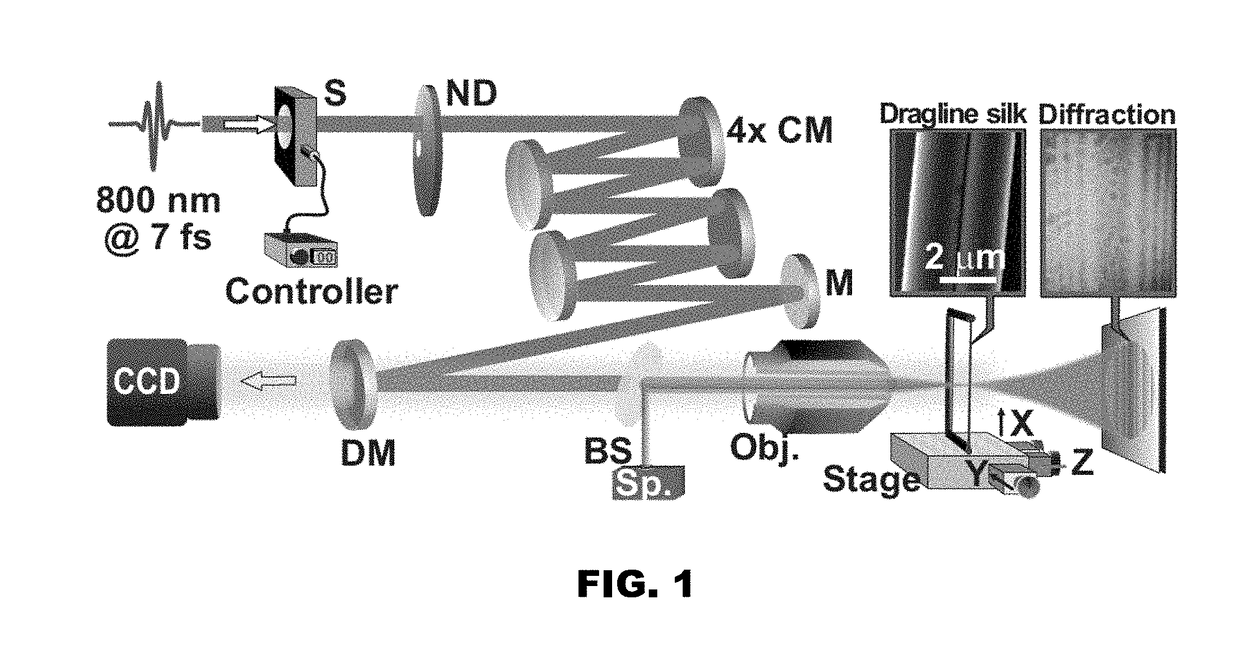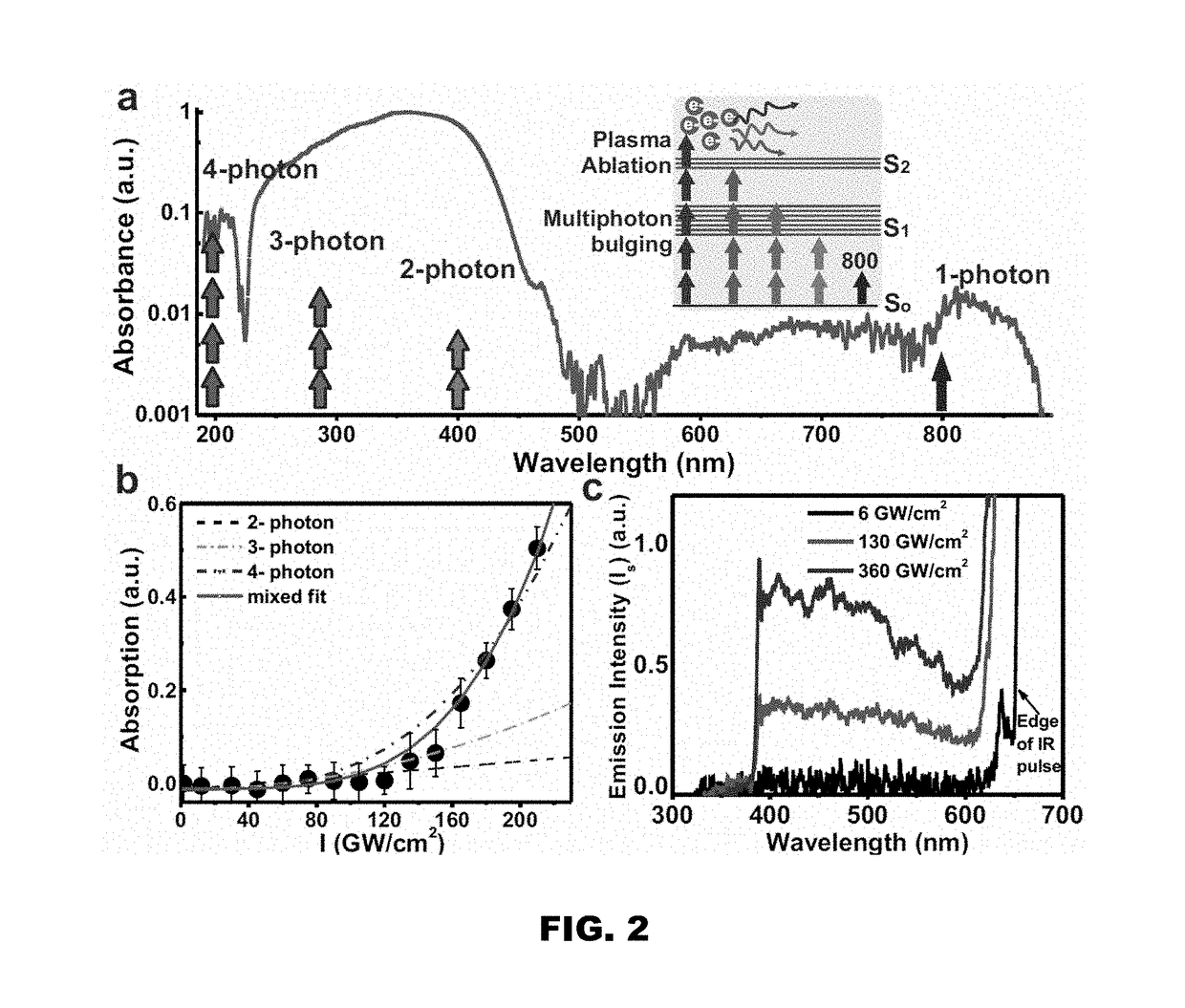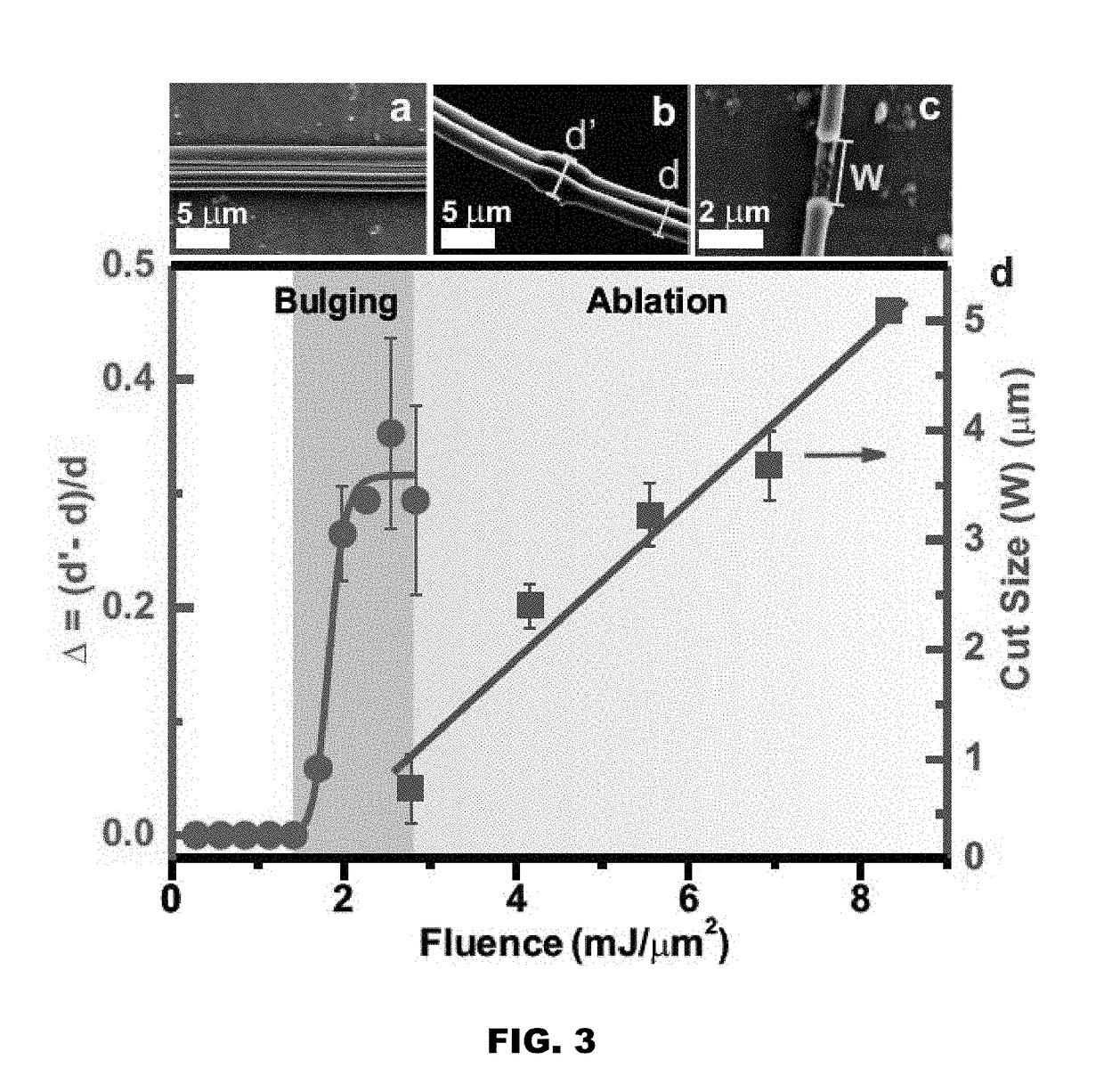Nanoprocessing and heterostructuring of silk
- Summary
- Abstract
- Description
- Claims
- Application Information
AI Technical Summary
Benefits of technology
Problems solved by technology
Method used
Image
Examples
example 1
[0072]Nano-Processing Setup
[0073]2 nJ femtosecond-laser system (Femtolaser, Austria) having spectral range of 800 nm, Repetition rate: 85 MHz, and pulse width: 7 fs, S-high speed mechanical shutter (Thorlabs, USA), ND—Neutral density filter (Thor Labs, USA) to control incident intensity, DCM—Dispersion compensated mirrors (Femtolasers, Austria) to maintain the pulse width till focus placed at an angle of 7° to each other. Number of bounces for fs-laser beam was optimized to 4 for maintaining pulse duration of 7-10 fs at focus. DM—Dielectric broadband dichroic mirror (λ=800 nm). Lens—a triplet lens objective having thin glass lens to avoid pulse broadening with Numerical aperture 0.2, The beam spot diameter at focus was about 5 μm. Sample—Stage-Automated X-Y-Z translation stage with a precision of 1 μm, CCD—two high resolution charged couple devices (CCD) were installed, one for diffraction imaging and other in line of focusing for real time monitoring before the dichroic mirror. The...
example 2
[0077]Micro-Welding of Silk with Artificial Materials
[0078]The spider silk was micro-welded to a tissue-like material such as poly-dimethoxysiloxane (PDMS) and contact lens of 9 mm diameter and 600 mg mass Poly (methyl methacrylate) (PMMA) by placing a silk fiber on the edge of fresh (wet) contact lens (FIGS. 6g and 6h). The silk fiber on the lens was exposed to fs pulses such that the damage to contact lens was minimal. This was possible because the contact lens has 500 μm thickness which is much larger compared to the ˜3 μm for silk. The weld joint was sufficiently strong to hold the contact lens in air even when it was dried. This suggests that the silk can be used to “glue” tissue-like materials under ambient conditions without using any chemicals or post processing steps.
[0079]Advantages
[0080]The key advantage of fs pulses is that one can process silk in air with nanoscale precision. Moreover, the key structural building blocks and functionality of silk fibers remain preserved....
example 3
[0081]Micro-Welding of Silk with Artificial Materials
[0082]Methods
[0083]Setup and sample preparation: The 2.2 nJ, 7 fs, 85 MHz pulses at 800 nm central wavelength were produced from the Rainbow oscillator (Femtolasers). Two pairs of chirp mirrors compensated the positive dispersion of the triplet lens objective (NA=0.2, working distance 1.7 mm) and delivered the sub-10 fs short pulses at the focus. The 1 / e2 focal diameter was about 5 μm.
[0084]The dragline silks, diameter 1-6 nm, were extracted from several lab-grown female spiders (Areneous neoscona). The 2-5 cm long silk samples were mounted on a 3-axis stage (Thorlabs) with both motorized and piezo-control offering a 25 nm minimum step increment. An electromechanical shutter (2 ms rise-time, Thorlabs) controlled the exposure time. The laser power was attenuated by the ND filter (Optical density-4) and measured with a power meter (Thorlabs). The optical diffraction of the silk was recorded on a white screen.
[0085]Optical, Raman and...
PUM
| Property | Measurement | Unit |
|---|---|---|
| Length | aaaaa | aaaaa |
| Time | aaaaa | aaaaa |
| Time | aaaaa | aaaaa |
Abstract
Description
Claims
Application Information
 Login to View More
Login to View More - R&D
- Intellectual Property
- Life Sciences
- Materials
- Tech Scout
- Unparalleled Data Quality
- Higher Quality Content
- 60% Fewer Hallucinations
Browse by: Latest US Patents, China's latest patents, Technical Efficacy Thesaurus, Application Domain, Technology Topic, Popular Technical Reports.
© 2025 PatSnap. All rights reserved.Legal|Privacy policy|Modern Slavery Act Transparency Statement|Sitemap|About US| Contact US: help@patsnap.com



